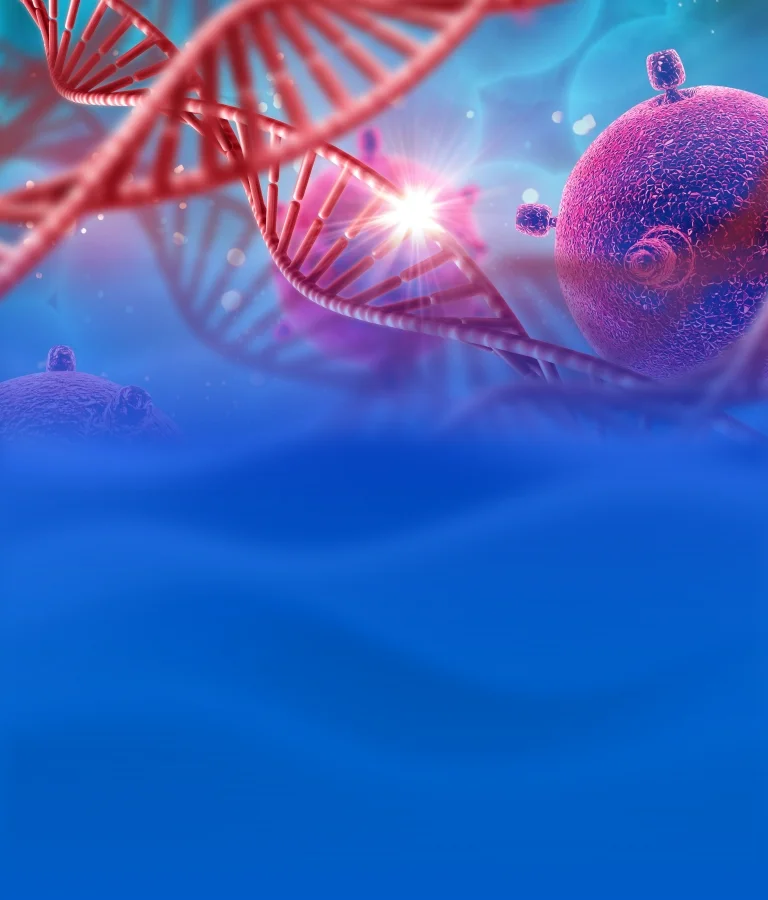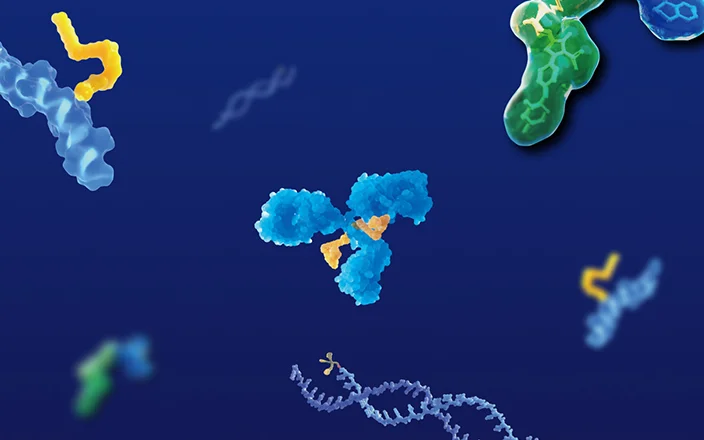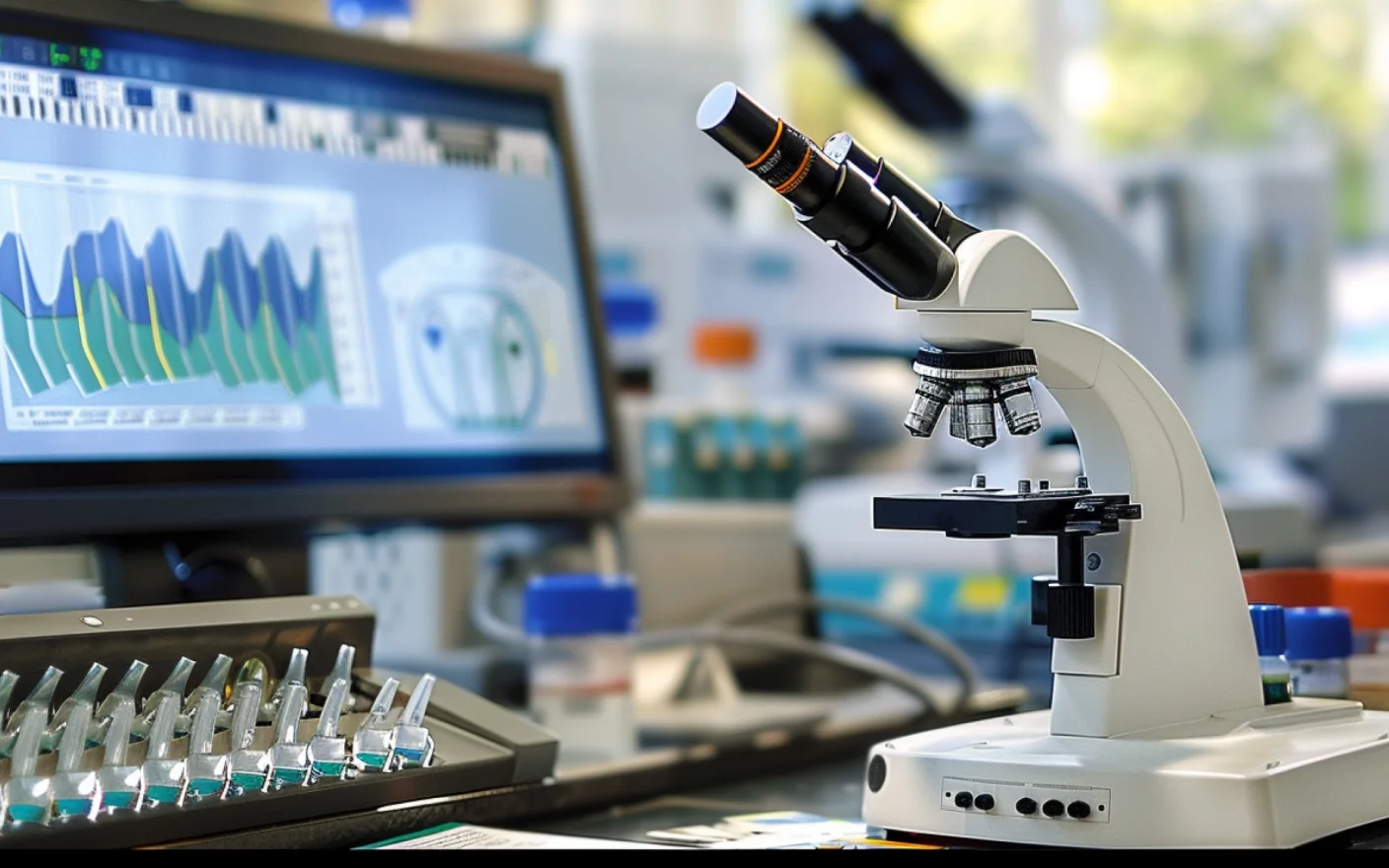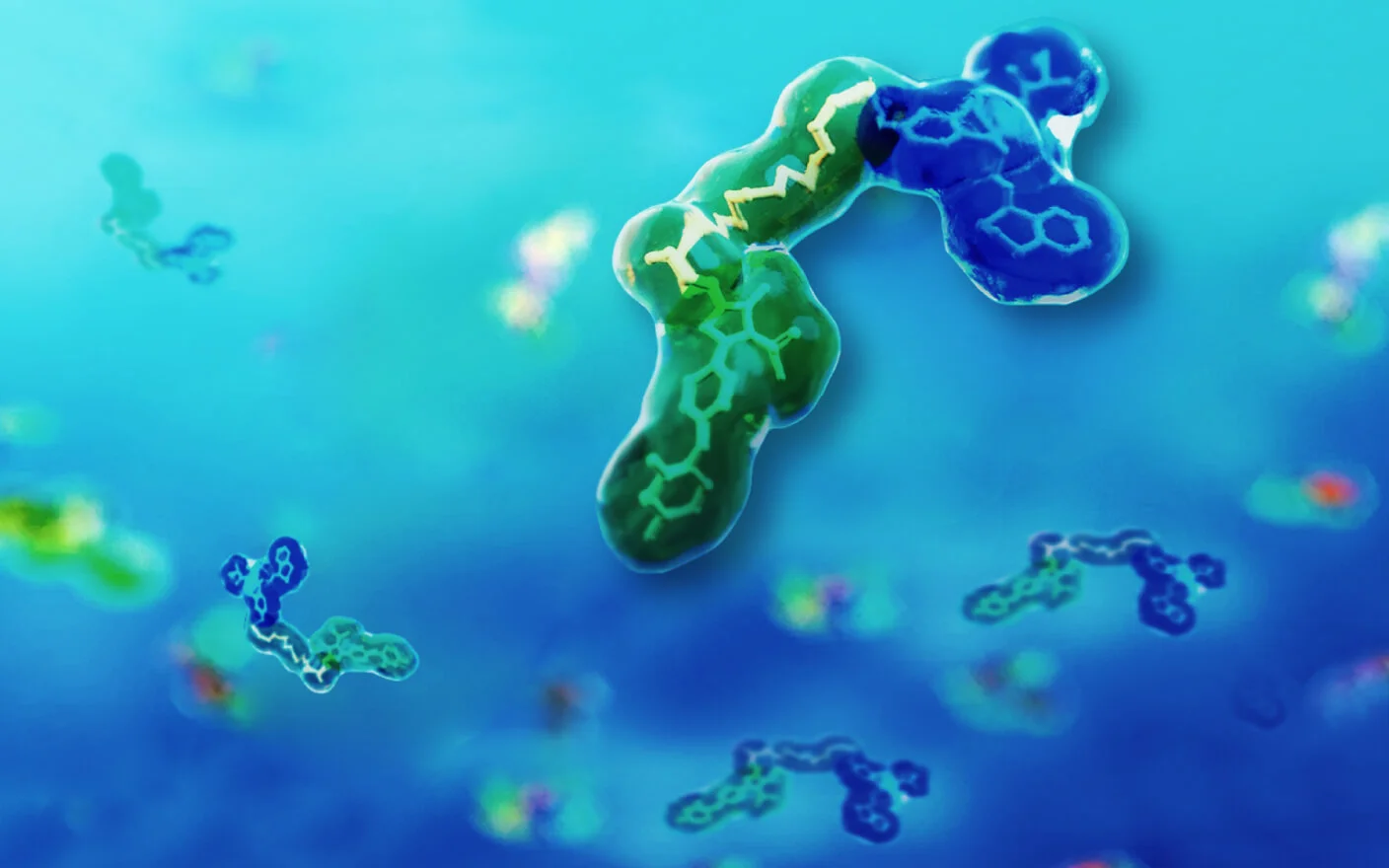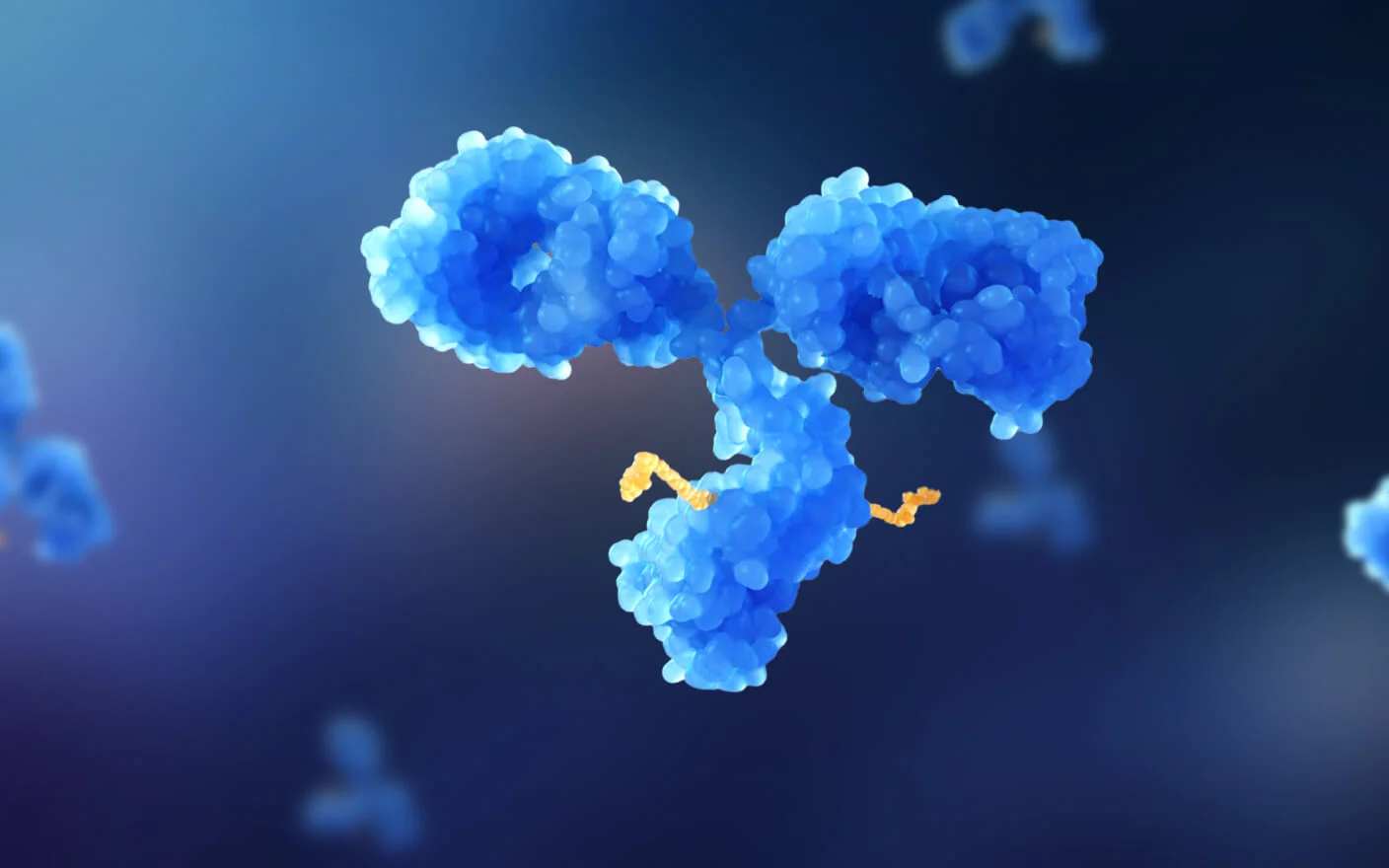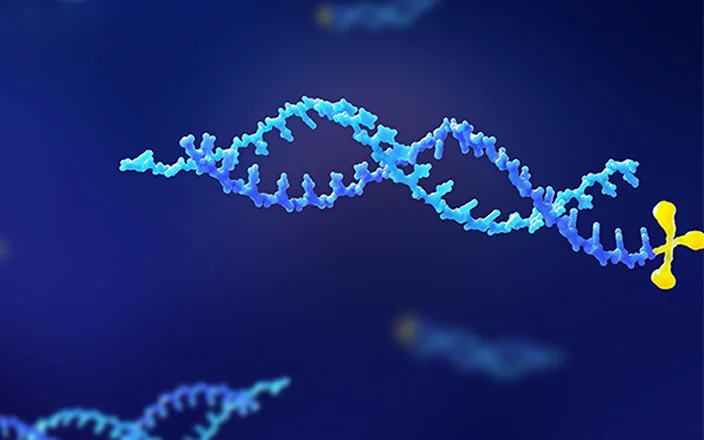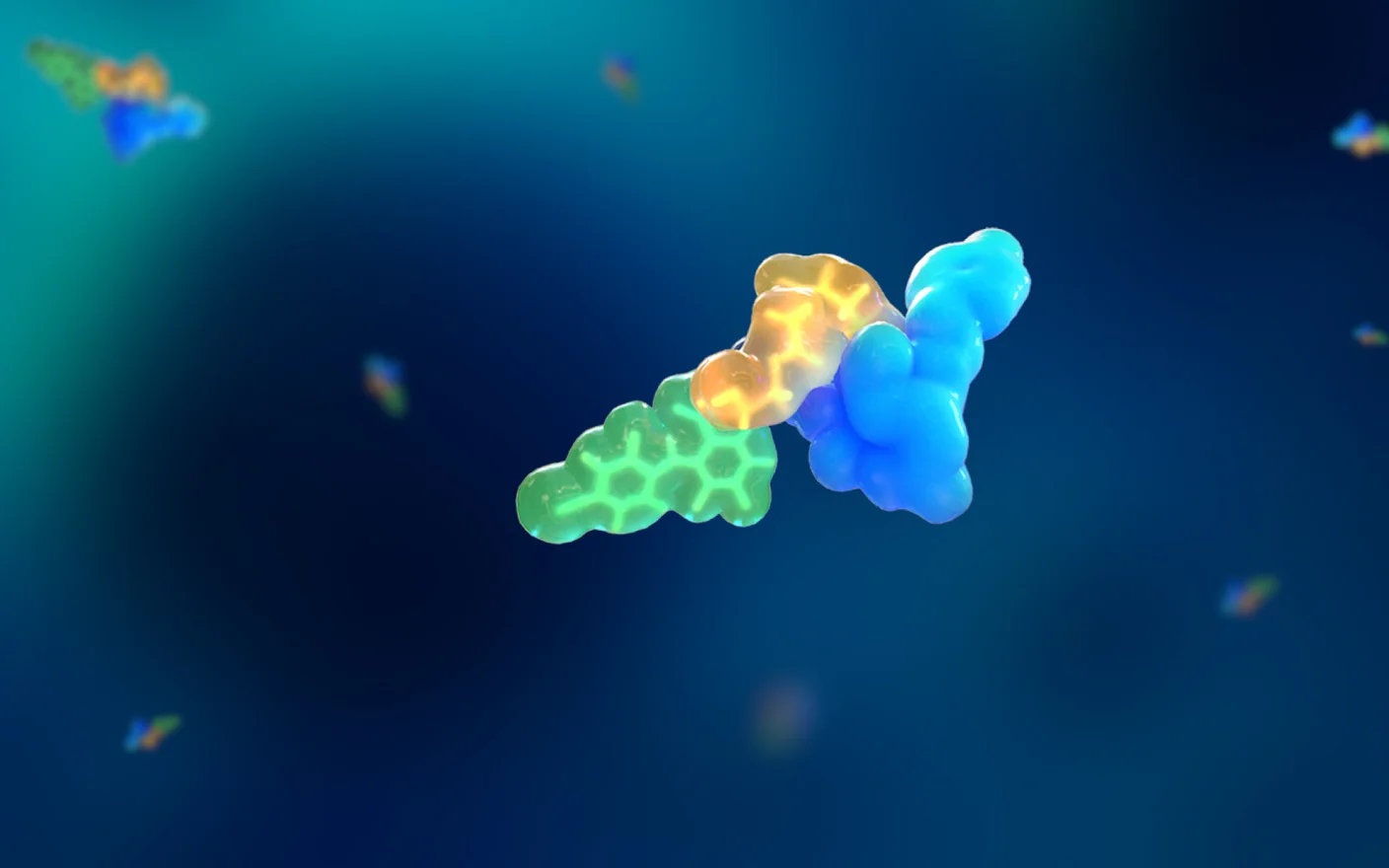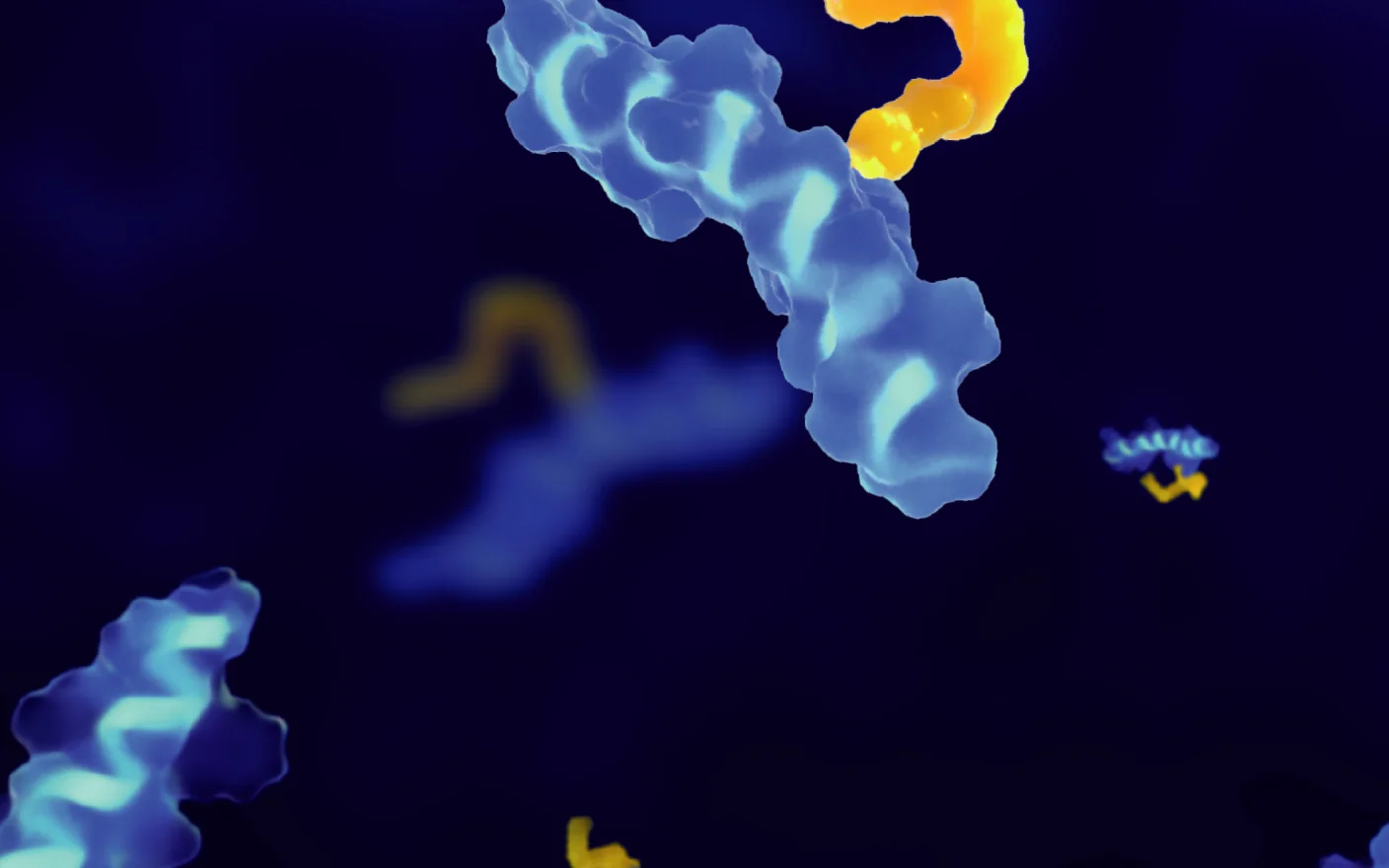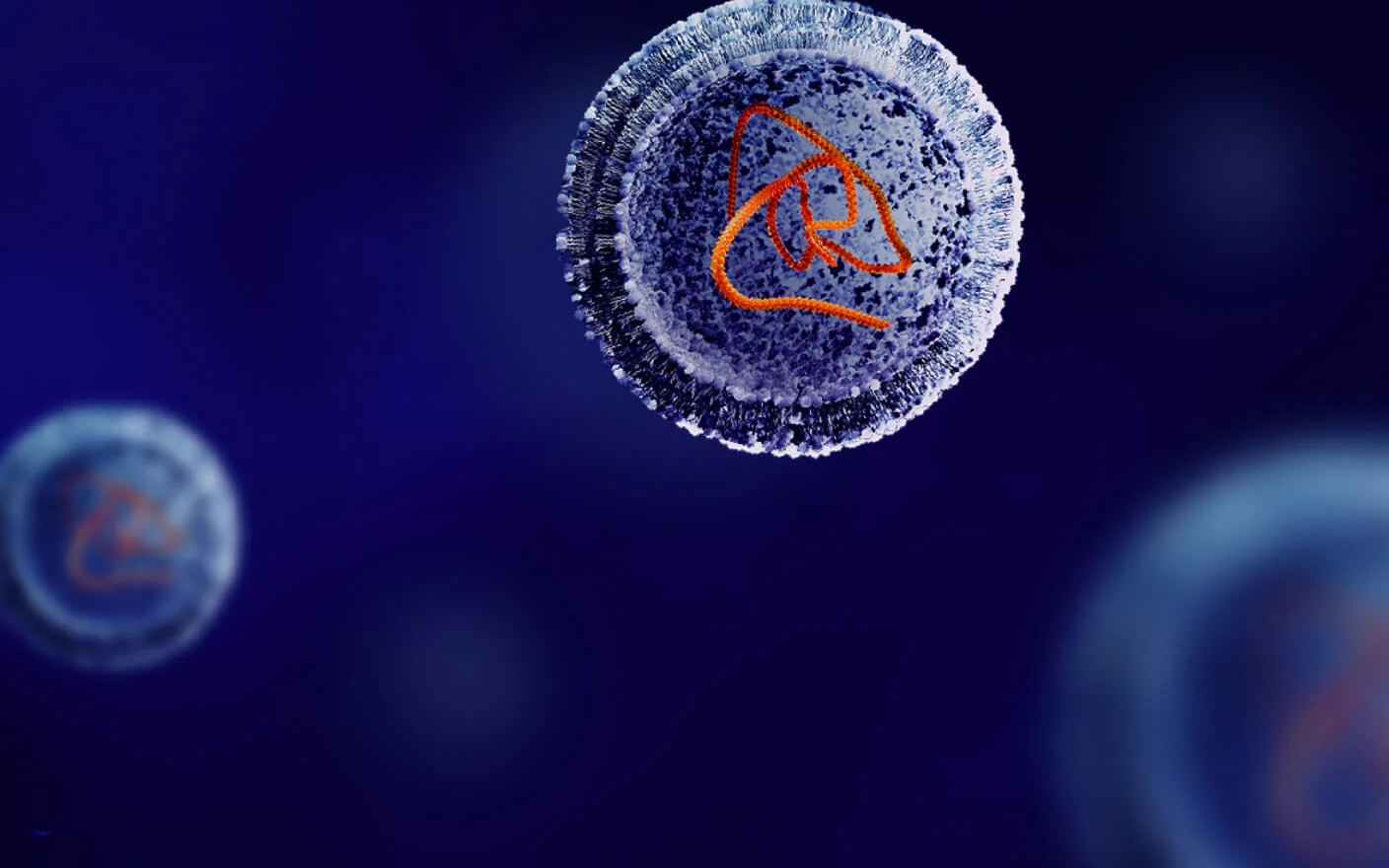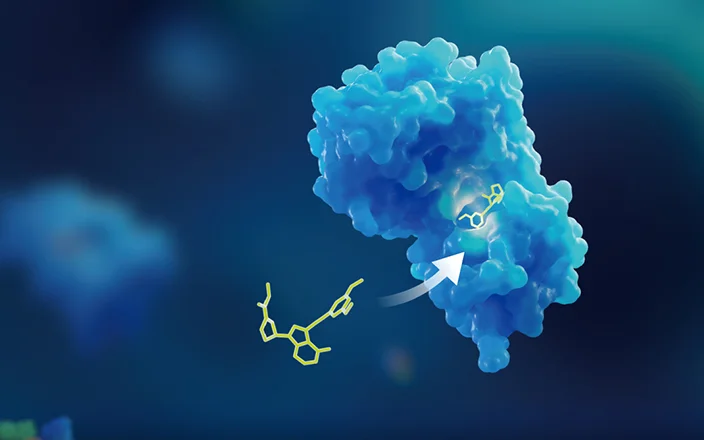Nucleic acid drugs have gained significant attention in recent years as a highly promising area of new drug development. With their unique technical features, they are expected to become the third wave of pharmaceutical innovation, following small molecule and antibody drugs. Among the known disease-related pathogenic proteins in the human body, over 80% cannot be targeted by conventional small molecule drugs or biological agents, making them “undruggable” protein targets. Nucleic acid drugs can act directly on disease-causing target genes or target mRNAs, recognize and inhibit target mRNA through base complementarity, and regulate protein expression to achieve therapeutic goals. Consequently, nucleic acid drugs have the potential to overcome the limitations of existing drug targets and offer tremendous potential for treating “undruggable” diseases. Nucleic acid drugs are also less prone to drug resistance, exhibit high specificity, and possess long-term efficacy, greatly improving their safety and drug efficacy.
Nucleic acid drugs include antisense oligonucleotides (ASO), small interfering RNA (siRNA), microRNA (miRNA), small activating RNA (saRNA), messenger RNA (mRNA), aptamer, ribozyme, and antibody–Oligonucleotide conjugates (AOC). They represent a gene therapy modality and a new generation of pharmaceutical technology following small molecule drugs, protein drugs, and antibody drugs. This article focuses on a class of nucleic acid drugs (hereafter referred to as oligonucleotides) that are shorter than 30 nucleotides (nt) in length. At present, 15 oligonucleotides have been approved by the Food and Drugs Administration (FDA) or the European Medicines Agency (EMA), of which nine are ASOs and five are siRNAs. Two to three oligonucleotides have been approved each year since 2018. As of 2022, oligonucleotides (marketed and under clinic trials) have been approved or tested in 102 different indications across 14 therapeutic fields (Figure 1), with the main therapeutic fields being metabolic disorders, cancer, neurology, and ophthalmology.1

Figure 1. Oligonucleotide drugs approved for clinical use as of 2022
Introduction to oligonucleotide drugs
Oligonucleotides, consisting of synthetic single or double-stranded modified ribonucleotides (RNA) or deoxyribonucleotides (DNA) less than 100 nt (nucleotides) in length, act on target genes based on Watson–Crick base pairing and can modulate gene expression via a variety of mechanisms. Since oligonucleotides target selected sequences through Watson–Crick base pairing with DNA or RNA, they can theoretically target any gene of interest by selecting the appropriate nucleotide sequence on the target DNA or RNA that is highly complementary to the target sequence. Therefore, oligonucleotide drugs are expected to have better drug-like properties compared to small molecule drugs.
Exogenous oligonucleotides need to overcome multiple obstacles to enter and function in the body, such as being structurally unstable and susceptible to degradation by endogenous nucleases; having large and negatively charged molecular structure, which makes it difficult to penetrate cell membranes and reach the intracellular space; having low escape efficiency from endosomes to the cytoplasm; and being immunogenic, potentially activating immune responses in the body. With technological advancements, many of these challenges have been addressed through chemical modification and delivery system technology breakthroughs, which have played a crucial role in the development of oligonucleotide drugs.
(1) Oligonucleotide drug chemical structure modifications
Chemical modification of oligonucleotides can increase their stability against nucleases and improve their target binding affinity. The first generation of chemical modifications focused on modifying the phosphate backbone, such as phosphorothioate (PS) modification. The second generation of chemical modifications involved modifications at the 2'-O position of RNA and the 2' position of DNA. Commonly used modifications include 2'-O-methyl (2-OMe), 2'-methoxyethyl (2-MOE), and 2'-fluoro (2-F). The third generation of chemical modifications included modification of the ribose and base. Common chemical modifications of oligonucleotides 2,3 are shown in Figure 2 below.

Figure 2. Common chemical modifications of oligonucleotides2,3
(2) Delivery of oligonucleotide drugs
Oligonucleotides require the aid of delivery systems to improve delivery efficiency, reduce dosing, improve tolerability, and thereby improve drug safety. Over the years, various delivery systems have been developed. Currently, the successful delivery systems are lipid nanoparticle (LNP) technologies and targeted delivery achieved through specific ligand binding (e.g. N-acetylgalactosamine: GalNAc).4
(3) Mechanisms of action of oligonucleotide drugs
Oligonucleotide drugs include various types such as ASO, siRNA, miRNA, aptamers, miRNA blockers, miRNA agonists, and unmethylated CpG oligonucleotides. Mechanisms and sites of action of various oligonucleotides are illustrated in Figure 3. Depending on their mechanism of action oligonucleotide drugs can decrease, increase, or restore protein expression.2

Figure 3. Mechanisms and sites of action of oligonucleotides2
Due to the distinct mechanisms of action of each oligonucleotide, they exert inhibitory effects at different stages of pathogenesis. As shown in Figure 4, Decoy targets DNA-encoded transcription factors in the upstream process of expression; ASO, siRNA, and miRNA act at the mRNA level; and aptamers directly inhibit the activity of proteins involved in pathogenesis. Their common feature is their ability to inhibit disease progression by interfering with gene expression.5

Figure 4. Schematic of oligonucleotide drugs acting on different stages of pathological gene expression to ameliorate disease pathogenesis and progression5
Advantages of oligonucleotide drug development
Oligonucleotide drug represents an emerging field of global interest due to their advantages of short development time, lower production costs compared to biologics, and high success rate in research and development.
• Short development time
Oligonucleotide drugs are designed based on the principle of base complementarity, where the majority of nucleic acid drugs rely on the pairing of bases. Therefore, designing drugs based on the target gene’s base sequence is relatively simple. The design of chemical modifications and delivery systems is independent of sequence design. Currently, there are multiple nucleic acid sequence design software available that analyze various parameters, considering sequence conservation, homology, immunogenicity, off-target effects, etc. These software tools enable rapid cross-species sequence alignment and homology analysis, allowing the selection of high specificity and potentially active oligonucleotide sequences.
• Lower production cost than biologics
Oligonucleotides are chemically synthesized and can be scaled up to industrial levels, resulting in lower production costs compared to biological molecules. The current technology for oligonucleotide synthesis is well-established and supports production from laboratory scale to commercial scale. These advantages significantly shorten the oligonucleotide drug research and development cycle. For example, Milasen, an oligonucleotide drug developed for a single patient, took only ten months from drug design to first clinical administration.
• High success rate in research and development
Oligonucleotide drugs have revolutionary advantages in terms of success rates in research and development. Taking Alnylam, a leading company in the siRNA field, as an example, it has achieved a 64.3% success rate in progressing from Phase 1 clinical trials to positive results in Phase 3 clinical trials, far surpassing the industry average of 5.7% for new drug development.
Challenges in the PK evaluation of oligonucleotide drugs
The regulatory guidelines and filing requirements for oligonucleotide drugs are still relatively vague. For example, the Food and Drug Administration (FDA) proposes that although the physicochemical properties of oligonucleotides are similar to biological products, they are still regulated as new chemical entities because they are usually chemically synthesized. However, currently marketed oligonucleotide drugs are usually referenced to the examination of the immunogenicity of the drug by large biological molecules. Therefore, both new chemical entity rules and the aspects involving biologics often need to be considered for PK studies of oligonucleotides.
To improve nucleotide drug stability and targeting capabilities, new technologies involving the chemical modification of oligonucleotides and delivery systems are constantly emerging. The chemical modifications of oligonucleotide drugs that have been developed include modification of the nucleic acid backbone, the sugar portion of ribose, and nucleobases. Delivery systems mainly include LNP delivery systems, polymer delivery systems, conjugate delivery systems, and viral vectors.6 Preclinical PK properties of oligonucleotides and their delivery systems should be evaluated simultaneously.
PK studies involve a variety of complex bioanalytical tools. Different oligonucleotides require different bioanalytical methods. Different stages of development for the same oligonucleotide drug involve different bioanalytical methods, and different sample types at the same stage require different bioanalytical methods. This means that PK analysis often involves collaboration among multidisciplinary teams, using multiple technical testing platforms.
Challenges in Oligonucleotide drug bioanalysis
Qualitative and quantitative analysis of oligonucleotide drugs and their metabolites is essential for drug development and evaluation, and robust bioanalytical methods are critical for PK and toxicological studies. Oligonucleotide molecular weights fall in the range of 7,000–15,000 Da, between large and small molecules. Currently, reported analytical techniques for oligonucleotide analysis can be broadly categorized into five types (Figure 5), relying on charge, mass, hybridization, imaging, or amplification/extension for quantitative analysis. Commonly used bioanalytical platforms include liquid chromatography triple quadrupole mass spectrometry (LC-MS/MS), liquid chromatography–high-resolution mass spectrometry (LC–HRMS), hybridization-based liquid chromatography-fluorescence assay (LC–FL), ligand binding assay (LBA) and quantitative polymerase chain reaction (qPCR). The inherent polyanionic nature of oligonucleotides greatly affects the sensitivity of their bioanalytical measurements, which are dependent on the length and chemical modification of the oligonucleotide molecule. In general, increasing oligonucleotide length/size decreases the detection sensitivity of LC-MS/MS and LC–HRMS methods, but increases the sensitivity of hybridization-based analysis. Additionally, individual variations of each oligonucleotide drug and the sensitivity of the method need to be considered, as well as the different stages of drug development.

Figure 5. Bioanalytical methods for oligonucleotides
Oligonucleotide bioanalysis faces many challenges:
(1) Diverse chemical modifications and delivery systems
Oligonucleotides are basically negatively charged, highly polar, and highly hydrophilic; however, different chemical modifications and delivery systems can significantly affect their physicochemical properties. Therefore, laboratory technicians need to select different analytical platforms based on the physicochemical properties, chemical modifications, and delivery systems.
(2) Involvement of multiple bioanalytical methods
Different stages of oligonucleotide drug development and different sample types require different levels of detection sensitivity, thus the selection of an appropriate analytical platform is necessary. Cross-validation is also required when multiple analytical methods are used to analyze samples from different stages of the same oligonucleotide drug.
(3) Involvement of multiple types of sample analysis
Oligonucleotide drugs rapidly distribute from plasma into tissues within minutes to hours, followed by one or slower elimination phases with half-lives of several weeks to months. Oligonucleotide drugs are distributed into more than 80% of systemic tissues, mainly in the kidney and liver, where exposure is hundreds to thousands of times higher than that in plasma, making oligonucleotide exposure in individual tissues important data for pharmacokinetic and toxicological studies. Usually, the tissue distribution of oligonucleotide drugs involves more than a dozen different tissues, and the sample collection, tissue sample homogenization, and matrix effects present challenges that need to be addressed in the development of bioanalysis methods.
(4) Immunogenicity
Oligonucleotide drugs could induce immunogenicity in the body; however, the detection of anti-drug antibodies against oligonucleotides has always been a challenge in bioanalysis. Because oligonucleotides have a relatively smaller molecular weight and carry a large negative charge compared to antibody-based drugs and can easily bind to positively charged biomolecules in vivo with relatively high affinities. Therefore, they exhibit poor specific binding to anti-drug antibodies and require analytical methods with high specificity and selectivity. In addition, the presence of abundant DNA or RNA fragments in the body can also interfere with the experiments.
Introduction to different analytical platforms
WuXi AppTec DMPK possesses a professional oligonucleotide bioanalysis team and advanced instruments and equipment. Our bioanalysis platforms include five major bioanalysis platforms: LC-MS/MS and LC–HRMS, fluorescence detection platform, LBA platform, and qPCR platform (Figure 6). These platforms enable us to deliver high-quality in vitro and in vivo data, conduct diverse biological analysis, and accelerate the drug development process.

Figure 6. Oligonucleotide bioanalysis platforms
Mass spectrometry platforms: Mass spectrometry platforms offer advantages in the development of quantitative analysis methods, including short development cycles and good specificity due to no requirement for assay-specific probe design and synthesis. These platforms also allow qualitative and quantitative analyses of metabolites. It has been widely used in the field of nucleic acid drug detection, but there are still many challenges, such as sample preparation, extraction, and suppression of mass spectrometry signals by ion-pairing reagents. We have established an oligonucleotide mass spectrometry platform including high-resolution mass spectrometry, with a detection sensitivity of 1–10 ng/mL to support early screening and preclinical pharmacokinetic studies.
Fluorescence detection platform: For long (25–60nt) oligonucleotides or oligonucleotides with specific structures, fluorescent probes complementary to the target oligonucleotides can be used for target identification/capture. Hybridized oligonucleotides are separated using LC and used for indirect quantitative analysis of the nucleic acid drug and its known metabolites using fluorescence chromatography. For this platform, we can perform the design and screening of probes with a detection sensitivity of 1–5 ng/mL.
LBA platform: LBA methods can also be used for quantitative analysis of longer oligonucleotides in biological matrices with a detection sensitivity of up to 50 pg/mL. These techniques offer strong inclusivity for chemical modifications and conjugation of oligonucleotides but are susceptible to interference by metabolites. We have developed a Hybridization-based Enzyme-Linked Immunosorbent Assay (HELISA) and MSD® electrochemiluminescence assay for the quantitative analysis of oligonucleotides in biological matrices, with a detection sensitivity of 50 pg/mL.
qPCR platform: The qPCR method has high sensitivity, but oligonucleotide drugs are usually short, requiring the use of stem-loop PCR or overlap extension PCR. Ligand binding platforms, fluorescence detection platforms, and mass spectrometry platforms all have corresponding regulatory guidelines; however, there is currently no specific regulatory guidance for qPCR platforms used in the quantitative analysis of oligonucleotides. Only suggestions made in industry white papers are available. Based on our experience in oligonucleotide drug research, the precautions for oligonucleotide drug development issued by different regulatory agencies, and cutting-edge research, we have established a comprehensive process for the development and validation of bioanalytical methods, with a platform detection sensitivity of 10 pg/mL or lower.
Conclusions
The pharmacokinetic study of oligonucleotide drugs requires the establishment of a comprehensive evaluation system by combining the nature of oligonucleotides themselves, chemical modifications, and principles and characteristics of delivery technologies. We look forward to the development of more oligonucleotide drugs to fill the current unmet clinical needs.
Click here to learn more about the strategies for OLIGO, or talk to a WuXi AppTec expert today to get the support you need to achieve your drug development goals.
Author: Nan Zhao
Committed to accelerating drug discovery and development, we offer a full range of discovery screening, preclinical development, clinical drug metabolism, and pharmacokinetic (DMPK) platforms and services. With research facilities in the United States (New Jersey) and China (Shanghai, Suzhou, Nanjing, and Nantong), 1,000+ scientists, and over fifteen years of experience in Investigational New Drug (IND) application, our DMPK team at WuXi AppTec are serving 1,500+ global clients, and have successfully supported 1,200+ IND applications.
Reference
[1] Moumné L, Marie AC, Crouvezier N. Oligonucleotide Therapeutics: From Discovery and Development to Patentability. Pharmaceutics. 2022 Jan 22;14(2):260
[2] Suzan M Hammond, et al. Delivery of oligonucleotide-based therapeutics: challenges and opportunities. EMBO Mol Med. 2021, 13(4), e13243.
[3] Anna Kilanpwska, et al. In vivo and in vitro studies of antisense oligonucleotides – a review. RSC Adv., 2020, 10, 34501-34516.
[4] Thomas C. Roberts, et al. Advances in oligonucleotide drug delivery. Nat Rev Drug Discov., 2020, 19, 673-694.
[5] Kazuki Takakura, et al. The clinical potential of oligonucleotide therapeutics against pancreatic cancer. International Journal of Molecular Sciences. 2019, 20. 3331.
[6] Roberts, T.C., Langer, R. & Wood, M.J.A. Advances in oligonucleotide drug delivery. Nat Rev Drug Discov 19, 673–694 (2020)
Related Services and Platforms




-

 DMPK BioanalysisLearn More
DMPK BioanalysisLearn More -

 Novel Drug Modalities DMPK Enabling PlatformsLearn More
Novel Drug Modalities DMPK Enabling PlatformsLearn More -

 Novel Drug Modalities BioanalysisLearn More
Novel Drug Modalities BioanalysisLearn More -

 Small Molecules BioanalysisLearn More
Small Molecules BioanalysisLearn More -

 Bioanalytical Instrument PlatformLearn More
Bioanalytical Instrument PlatformLearn More -

 PROTAC DMPK ServicesLearn More
PROTAC DMPK ServicesLearn More -

 ADC DMPK ServicesLearn More
ADC DMPK ServicesLearn More -

 Oligo DMPK ServicesLearn More
Oligo DMPK ServicesLearn More -

 PDC DMPK ServicesLearn More
PDC DMPK ServicesLearn More -

 Peptide DMPK ServicesLearn More
Peptide DMPK ServicesLearn More -

 mRNA DMPK ServicesLearn More
mRNA DMPK ServicesLearn More -

 Covalent Drugs DMPK ServicesLearn More
Covalent Drugs DMPK ServicesLearn More
Stay Connected
Keep up with the latest news and insights.

